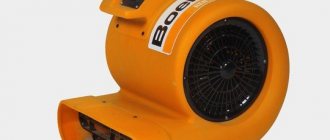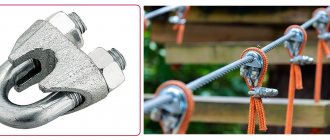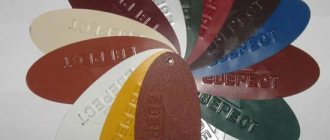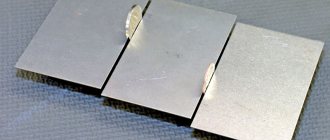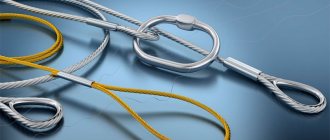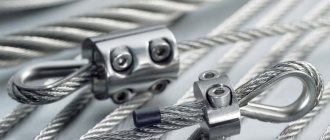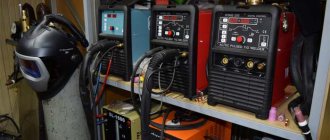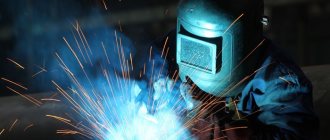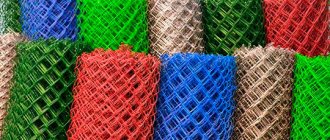14.07.2021
Most technological processes are accompanied by vibration - mechanical vibration of machines and mechanisms. This is a negative process that occurs against the background of the operation of production equipment and affects its service life and the quality of manufactured products. Air purification systems, supply of working fluids, and power units generate waves of different frequencies, causing mechanical vibrations of a technical device, which negatively affects its functionality and leads to destruction of the mechanism.
The installation of special compensation elements – vibration mounts – will help reduce the noise of operating equipment and eliminate vibration. They dampen mechanical vibrations, preventing passive and active vibration.
Pump installation errors
Up to 90% of problems with the failure of modern high-quality pumps in a short period of time are associated with installation and commissioning errors.
In this case, the pumps fail within 2-4 months from the date of launch. Let's look at these errors using the example of cantilever-type pumps. These pumps are considered classics of pumping production and yet with their installation and commissioning errors are the most common. In this publication, we will examine the three most common causes of pump failure due to improper installation:
- Errors in making the foundation
- Errors in installing vibration damping elements
- Incorrect alignment of pump and motor shafts
When considering installation errors, we will use the experience of the Service Center specialists, the regulatory documentation of the pump manufacturer and the Service database regarding calls for service specialists to real objects.
Here is an example of a typical installation error of a cantilever pump, in this case Grundfos:
Places of installation errors that are immediately visible are circled:
- The foundation does not meet installation requirements
- Vibration inserts are not installed correctly
Let's read what the manufacturer Grundfos says about vibration inserts in the installation instructions:
Below, from the installation instructions, is a diagram of the pump with rules for installing the vibration insert.
The figure clearly shows how the vibration insert is installed. The one and a half distance from the pump at both ends is clearly visible. The diagram clearly shows a concrete foundation under which vibration damping supports are installed.
Now let's look at another type of error that led to pump failure. In this case, the pumps did not have a foundation, vibration supports were installed incorrectly, alignment was not performed, and commissioning was not carried out, which should have revealed all this before the equipment was put into operation.
Regarding the foundation, the regulatory requirements of the pump manufacturer are also simple and clear:
But what happens when, during installation and commissioning, the pump and motor shafts are not ALIGNED
Here are the requirements for aligning pump shafts:
ATTENTION! All the pumps shown in the photo failed in a short period of time: from several days to several months. All of them were under official warranty service. However, due to non-compliance with the installation rules of the pumps recommended by the manufacturer, the warranty was canceled and repairs were carried out by the operating organization on a paid basis!
However, due to non-compliance with the installation rules of the pumps recommended by the manufacturer, the warranty was canceled and repairs were carried out by the operating organization on a paid basis!
If you have questions or doubts about the correct installation or commissioning of the equipment, contact the Service Center and clarify all the necessary information.
GENERAL PROVISIONS
Upon completion of the main civil works, the construction site is being prepared for the installation of building elements associated with the ventilation device: arrangement of platforms and foundations for ventilation equipment, laying of underground ducts, openings in walls, ceilings and partitions for installation of air ducts or ventilation equipment, intake shafts, premises for placement of supply and exhaust chambers, etc.
Red marks for clean floors are painted on the walls with indelible paint.
The installation of ventilation devices begins when the object is accepted for installation according to the act. Lifting and transport, installation and rigging devices are prepared according to the work plan before installation begins. Tools and mechanisms are delivered to the construction site the day before the start of work based on the number of workers employed in the installation team. Ventilation equipment and air ducts are delivered to the on-site warehouse before work begins.
Installation of ventilation devices is carried out from components and parts, prepared in advance and fully equipped. Air ducts associated with process equipment are installed after installation of the process equipment; general ventilation air ducts - regardless of process equipment.
The use of vibration mounts will improve the quality of parts processing
Vibrations that occur during equipment operation affect product quality, increase wear of components, and have a destructive effect on materials. Runouts are especially noticeable when grinding. Protection will be the installation of each unit on vibration supports that prevent the machines from acting on each other, on a solid base, and reverse reaction forces. Various types of such supports have been developed for individual processing mechanisms. The widespread use of vibration support OB is due to the fact that it provides protection in the axial and longitudinal direction.
Adjustable vibration support SE 1
Rubber-metal supports OB for metal-cutting machines
Designed to protect against passive (coming from outside) and active (arising in the nodes and spreading to surrounding objects) vibration. The principle of operation is compression.
OV-31
Rubber-metal vibration mounts OV-31 OV-70
Rubber-metal vibration mounts OV-70
Such supports make it possible to install equipment without an anchor foundation. Reduces costs when preparing a workshop, allows you to move or replace a machine with a different frame. Allows ergonomic use of space. Reducing vibration transmitted through floors makes metalworking possible in the workshop without significant noise impact on other areas of the building.
Designed for machine tools with increased or normal accuracy characteristics, TU2-024-5997-87. Visually presented in 3d drawings.
The supporting part will not require regular technical maintenance or revision, and will retain its performance characteristics in the absence of significant aggressive effects on the rubber.
Design
The constituent elements are:
- stud with a turnkey square;
- lid;
- top and bottom nut;
- washer – 2 pcs;
- rubber-metal shock absorber (rubber element + flange).
All metal parts, clearly presented in the 3d drawing, have an anti-corrosion coating.
The operating conditions for rubber are the same as those established by the standards for industrial premises where people constantly work. Heating above +60°C has a destructive effect on the elastic parts. Freezing causes rubber to crack under load.
Types of vibration supports
Criterias of choice
The technical specifications indicate the minimum and maximum load at which the support operates effectively. The weight of the metalworking machine must be distributed over the appropriate number of 3D points of one model (for example, 70 meters) or choose a more powerful one - 31 meters. In addition, they differ in height adjustment.
Purpose of adjustment
The length of the thread on the stud is not intended to equalize sudden changes in 3D floor levels. Its purpose is to set, by adjusting the fit of the nut, an even distribution of the weight of the machine on the base. Therefore, the optimal combination of the following conditions will be:
- The shortest distance from the vibration support cover to the frame, the maximum passage of the nut;
- Equal compression of all rubber pads, uniform tightness.
Several vibration sources in the same room may at some moments coincide in frequency. The device ov 31m, ov 70 is a low-resonance device that does not allow large amplitude 3d movements of the frame.
Installation of vibration-isolating inserts for pressure pumps: 1.6 MPa with a diameter of 300 mm
LOCAL RESOURCE STATEMENT GESN 18-05-002-09
| Name | Unit |
| Installation of vibration-isolating inserts for pressure pumps: 1.6 MPa with a diameter of 300 mm | 10 inserts |
| Scope of work | |
| 01. Fitting and welding flanges to the ends of pipes. 02. Installation of flexible inserts with flange connections using bolts and gaskets. |
PRICE VALUES
The price list shows the direct costs of the work for the period of March 2014
for the city of Moscow, which are calculated on the basis of
2014 standards with additions 1
by applying indices to the prices of the resources used.
2000
federal prices .
The following indices and hourly rates from the “Union of Cost Estimating Engineers” were used: Index to the cost of materials: 7.485
Index to the cost of machines:
11.643
Hourly rates used: The monthly wage at a given hourly rate is indicated in parentheses.
Hourly rate 1st category: 130.23 rubles. per hour ( 22,920
) rub.
per month. Hourly rate 2nd category: 141.21 rubles. per hour ( 24,853
) rub.
per month. Hourly rate 3rd category: 154.46 rubles. per hour ( 27,185
) rub.
per month. Hourly rate 4 categories: 174.34 rubles. per hour ( 30,684
) rub.
per month. Hourly rate 5th category: 200.84 rubles. per hour ( 35,348
) rub.
per month. Hourly rate 6th grade: 233.96 rubles. per hour ( 41,177
) rub. per month.
By clicking on this link, you can see this standard calculated in 2000 prices. The basis for applying the composition and consumption of materials, machines and labor costs are GESN-2001
LABOR COSTS
| № | Name | Unit Change | Labor costs |
| 1 | Labor costs of construction workers Grade 3.7 | person-hour | 59,19 |
| 2 | Labor costs for drivers (for reference, included in the price of the EV) | person-hour | 0,55 |
| Total labor costs for workers | person-hour | 59,19 | |
| Workers' compensation = 59.19 x 168.38 | Rub. | 9 966,18 | |
| Payroll for drivers = 171.54 (for calculating invoices and profits) | Rub. | 171,54 |
How much does it cost to renovate an apartment? The cost of apartment renovation per hour.
OPERATION OF MACHINES AND MECHANISMS
| № | Cipher | Name | Unit Change | Consumption | St. unit.Rub. | TotalRub. |
| 1 | 021141 | Truck-mounted cranes when working on other types of construction 10 t | mach.-h | 0,55 | 1303,9 | 717,15 |
| 2 | 040502 | Installations for manual arc welding (DC) | mach.-h | 15,54 | 94,31 | 1 465,58 |
| 3 | 400001 | Flatbed vehicles, load capacity up to 5 tons | mach.-h | 0,63 | 1014,92 | 639,40 |
| Total | Rub. | 2 822,12 |
CONSUMPTION OF MATERIALS
| № | Cipher | Name | Unit Change | Consumption | St. unit.Rub. | TotalRub. |
| 1 | 101-1522 | Electrodes with a diameter of 5 mm E42A | T | 0,023 | 77559,57 | 1 783,87 |
| 2 | 101-2576 | Bolts with nuts and washers for sanitary works with a diameter of 16 mm | T | 0,0224 | 111002,55 | 2 486,46 |
| 3 | 301-1156 | Vibration-isolating inserts for pressure 1.6 MPa (16 kgf/cm2), diameter 300 mm | set | 10 | 12552,34 | 125 523,40 |
| 4 | 507-1008 | Steel flat welded flanges made of steel VSt3sp2, VSt3sp3, pressure 1.6 MPa (16 kgf/cm2), diameter 300 mm | PC. | 10 | 3511,74 | 35 117,40 |
| 5 | 509-0971 | Gaskets made of paronite grade PMB, 1 mm thick, 300 mm in diameter | 1000 pcs. | 0,02 | 114301,19 | 2 286,02 |
| Total | Rub. | 167 197,15 |
TOTAL BY RESOURCES: 170,019.27 RUB.
TOTAL PRICE: RUB 179,985.45.
You can see this standard calculated in 2000 prices. by following this link
The price is compiled according to the standards of GESN-2001 as amended in 2014 with additions 1
in prices
of March 2014.
To determine intermediate and final price values, the DefSmeta program was used
Estimate for the construction of a house, renovation and decoration of apartments - DefSmeta
Rental
The program provides an assistant who will turn the preparation of estimates into a game.
Purpose in production
The cause of vibrations in most cases is the operation of workshop equipment
All this affects the operation of the equipment. This phenomenon is negative, so the task of the engineering department is to minimize it. A good solution in this matter would be to install compensation elements that will dampen vibrations, preventing their further spread and helping to get rid of vibrations. It is for such purposes that vibration supports are intended.
To select the required model, the following factors should be taken into account:
These parameters are general when choosing a support type. The possibility of influence of external factors on the material, as well as manufacturing - aggressive elements, humidity, temperature changes is also important.
Installing a vibration support for equipment will have a positive impact not only on the quality of its work, but also on the safety of the floor in the workshop. Without constant repair work, it will last much longer.
Causes of vibration
Noise level is one of the characteristics by which an air conditioner is selected. The indoor unit operates in the range of 26-36 dB. The outdoor module produces more noise - up to 56 dB. Loud noise comes from moving parts - the fan and compressor. The hum is often accompanied by vibration. An unpleasant situation arises for various reasons:
- unbalanced fan impeller;
- poorly secured bolts on brackets;
- mounting the block on a weak surface;
- lack of vibration support for the air conditioner.
An increased level of vibration accompanies the operation of not only budget, but also expensive models. If it is caused by defects in the installation of the outdoor unit, they can be corrected.
Vibration supports for machines and equipment
On the Stankoff.RU website you can buy vibration supports for equipment and machines from leading manufacturers. Popular models of vibration-isolating supports are available and can be ordered at the best prices. Only profitable offers with detailed descriptions and photos.
Purpose and benefits of use
High vibration activity of equipment in any production becomes a source of numerous problems and is eliminated using various methods that differ in the complexity of execution and the amount of financial costs.
The most practical method of existing technologies is to purchase special pillows that can dampen waves generated during the operation of mechanical units.
To effectively dampen and reduce the amplitude of vibrations, it is enough to buy vibration supports for machine tools, which ensure effective vibration absorption and noise elimination.
Vibration mounts for equipment are used to eliminate or reduce the level of destructive vibrations to acceptable values. The use of devices in production makes it possible to:
- increase efficiency and quality of work;
- increase the accuracy of performed operations;
- make maximum use of the working resource of the mechanisms;
- eliminate discomfort for operating personnel.
Almost all types of industrial equipment are sources of vibration. Regardless of the origin of the waves that arise during operation of the mechanisms, vibration fields lead to rapid wear of parts and reduce the efficiency of the work process.
The presence of constant noise and vibrations causes harm not only to machines and surrounding structures, but also has a negative impact on the human body.
The consequence of long-term work in conditions of constant vibration is various pathological disorders that become the cause of occupational and general diseases.
Vibration mounts for machine tools perform the functions of active and passive protection of equipment from the destructive effects of mechanical vibrations and additionally allow:
- increase the mobility of technical devices;
- install units without laying a foundation;
- adjust the height and horizontal level of machines.
The devices are designed for installation on small and medium-sized units equipped with a high or normal precision frame. The funds spent on purchasing vibration supports are recouped in a short time due to the increased service life of the equipment, the increased class of product quality and the efficiency of personnel.
Design and varieties
Inexpensive, resistant to loads, aggressive environments and corrosion, vibration-isolating mounts have a simple design and are classified depending on the expected static load and natural frequency range.
The main working element of the device is a cushion made of rubber or metal, and provided with a special sole with anti-slip properties.
When creating vibration supports for machines with a large volume and mass, the structure is reinforced with springs or springs that act as a shock absorber.
Choosing a device with optimal technical characteristics will allow you to achieve maximum effect when used. Based on the material used to make the base, vibration supports are divided into the following types:
- Rubber. They have good frost resistance, but cannot be used at temperatures above 60 degrees, which causes rapid destruction of the base. They are created from synthetic and natural raw materials with different specific gravity.
- Rubber-metal. They belong to the combined type. Reinforcement with a metal gasket ensures the safety of the rubber layer and makes it possible to adjust the height and level of the equipment during installation.
- All metal. They are used to absorb vibrations during the operation of massive machines. During operation, slight deformation of the product is allowed, which does not affect the vibration isolation properties.
The disadvantage of all-metal devices is their inability to dampen high-frequency vibrations. Some manufacturers use a composition of lead and asbestos, cork or felt base in the production of vibration supports.
Types of vibration supports
Types of vibration supports
One of the advantages of using compensation components is the reduction of costs for setting up a production line. There is no need to make a separate foundation for each machine, to take into account its mass and the characteristics of oscillatory processes during operation.
But for normal operation, it is necessary to correctly select the design of the vibration pads and the material for their manufacture. Currently, several types of these components are produced, which differ in technical characteristics:
- rubber. One of the most common materials for manufacturing. Both natural and synthetic rubber are used. It is important to pay attention to its specific gravity. Does not lose its characteristics at low temperatures, but if the exposure exceeds +60°C, rapid destruction occurs;
- rubber-metal. To increase the maximum load, a metal support is additionally installed. With its help you can adjust the height and control the level. Partially performs protective functions, preventing premature destruction of the elastic material;
- all-metal. Area of application – damping vibrations with a significant mass of the machine. Significant deformations may occur without loss of performance. The disadvantage is the transmission of high-frequency vibrations. Springs or springs can be used as a shock-absorbing element.
Bases made of felt and cork are less common. They perform the functions of adjusting the height of the machine, but the elimination of vibrations is insignificant. Lead-asbestos gaskets are the least common.
All parameters of dynamic vibration dampers must first be calculated. For this purpose, a special computing technology is used, which depends on many external factors.
The video shows an overview of rubber-metal vibration mounts for equipment:
Vibration support OV-31-M
This type of vibration support is used for medium and light machines. Light crushers, milling and grinding equipment, turning and drilling equipment will be reliably installed in the allocated space. The characteristic features of the OV-31-M are:
- Weight is 1.56 kilograms.
- The adjustment limits are 12 millimeters.
- The assembled height is 13.2 centimeters.
- The diameter of the rubber cushion is 14.2 centimeters and the height is 6.
- The pin has a diameter of 16 millimeters.
- The permissible load ranges from 0.25 to 4.5 tons.
Such a product will have 4 support points, equipment weighing from 1 to 18 tons. For lighter units, the shock absorber does not work due to rigidity. And a heavier load will squeeze it into the lid body until it reaches the floor. The number of OV-31-M should be increased.
Review of vibration mounts of the OB series and their characteristics
| Model of vibration support for the machine | OV-31 | OV-70 |
| Pin diameter, mm | 16 | 12 |
| Minimum load, kg | 450 | 50 |
| Maximum load, kg | 4570 | 500 |
| Maximum case diameter, mm | 142 | 70 |
| Height, mm | 130 | 111 |
| Regulation limit, mm | 15,6 | 6 |
| Price from, rub | 375 | 300 |
OV - 31 OV - 70
OV - 31
OV - 70
Vibration mounts for refrigeration equipment
In industrial refrigeration technology, vibration mounts are used to reduce the level of vibration transmitted from a refrigeration unit, chiller, multi-compressor station or compressor to the foundation, floor or supporting frame structure. Vibration mounts of this type are installed under the unit, the vibrations from which need to be reduced. As a rule, the need to install vibration supports arises when piston compressors are used as part of a refrigeration unit or multi-compressor station. Vibration mounts for refrigeration equipment are available in two main types:
— for indoor installation: BWZ type B, NSV type VHB, VM-5000.
— for outdoor installation: BWZ type MP, NSV type VM-3000, SRM.
The choice of vibration support model is made based on the maximum permissible load (in kg) on the vibration support specified in the manufacturer’s technical specifications. In addition, to achieve the best result in reducing vibrations in each specific case, it is recommended to test several supports with different hardnesses. The PHS company supplies vibration supports from two well-known world brands (Germany) and NSV (South Korea).
16. Vibration-damping supports and sound-absorbing material
16.1. Vibration damping mounts "BWZ" type B
Universal rubber-metal supports are used for installation under compressors, compressor units, refrigeration units, pumps, motors or fans. Designed to reduce vibration levels.
Material: natural rubber, steel parts are galvanized.
Prices of vibration damping supports BWZ
16.2. Vibration damping mounts “BWZ” type MP
Supports of type MR, in contrast to vibration-damping supports of type B, have a metal protective casing that limits the contact of rubber with oils and ultraviolet radiation. They are the preferred solution for installing equipment outside the machine room.
Prices of vibration damping supports BWZ
*-studs are not included in the kit Supports with protection against tearing
16.3. Vibration damping mounts “NSV” type VHB
A neoprene vibration absorber is used for mounting small fans and air ducts.
Prices of vibration damping supports NSV
16.4. Vibration damping mounts “NSV” type VM-1000
A neoprene vibration absorber is used for mounting small fans, pumps, engines, and units. The free slots make it easy to attach the shock absorber.
Types of products
Rubber vibration dampers for the external unit
Experienced installers know how important it is to install vibration-isolating products. They prevent the transmission of vibrations through the metal to the enclosing structure. By design there are rubber and spring. The materials used to make dampers are rubber, natural vulcanized rubber and other polymers. Two bolts or one pin are cast into the elastic shock-absorbing element and are used for fastening. Damper rubber has excellent vibration damping characteristics. Its structure contributes to the extinction of waves. The material is resistant to aging and wear, and does not crack during use. Among the advantages of the product:
- moisture resistance;
- operating temperature range from -40°C to +70°C;
- withstands short-term exposure to acid and oil;
- height adjustment of the support is possible;
- versatility - the products are suitable for any model of split system, the main thing is to choose the right load.
Vibration supports are made in various shapes: cylindrical, truncated cone, round.
Telescopic vibration supports MNa
In products of other designs, the main part is a steel spring. It smooths out low frequency vibrations. Polymer plates are rigidly attached to the end turns of the element. The spring can be placed between steel discs coated with thermoplastic. This design protects the internal mechanism from moisture and contamination.
When choosing an anti-vibration mount for the outdoor unit of the air conditioner, several important factors should be taken into account:
- load - products are designed for a certain weight of the air conditioner;
- characteristics of the product material;
- vibration absorption capabilities.
The parts differ in color; it depends on the applied dynamic load.
High-quality vibration isolators for air conditioners are produced by the following companies: Tecnosystemi, Soleco. Italian brands offer adjustable anti-vibration mounts designed for high weights of up to 150 kg per product. Soleco vibration isolators are made of galvanized steel and practical elastomer. They are resistant to ultraviolet radiation, weather conditions, organic fats, and provide electrical insulation. The parts have a hole for an M8 pin; the color of the model indicates the permissible load.
Vibration pads between the wall and brackets
Rubber vibration pads between the bracket and the wall reduce the noise level.
Special requirements for strength are imposed on the installation site of the outdoor unit and the supporting fastening elements. They must be able to withstand the weight of the module with a reserve. If the building is panel, vibration from operating equipment can be transmitted to neighboring apartments. Isolating the bracket post from the wall surface will help to avoid conflicts and gradual destruction of the enclosing structure. A rubber vibration pad is placed between the two elements.
Vibration supports for the legs of the external unit of the air conditioner
Vibration dampers for outdoor units or silent blocks for paws are designed to dampen medium and high frequency vibrations. They are installed between the air conditioner and the metal support post. A set of four vibration supports comes with 8 washers and nuts made of galvanized steel. Other fasteners can also reduce vibration levels. Vibration dampers are offered in the form of a rubber gasket with a hole for an M8 bolt.
Installing a vibration support for an air conditioner is the simplest and most affordable way to avoid increased noise levels when operating air conditioning equipment.
What you need to prepare - tools and materials
If your workshop has all of the above, then you can make a vibrating machine for making blocks:
- Welding machine. You can assemble a vibrator for shaking blocks with your own hands and using bolted joints, but welding is much faster.
- Grinder with cutting and grinding wheels.
- Drill and drill bits of required sizes.
- Bolts, nuts, washers and wrenches for them.
- Tape measure and ruler for measuring and marking.
- Metal sheet - the lid for the vibrating table will be made from it. At home, you can also use a wooden one, but only for low-power devices, otherwise the vibration will very quickly loosen the fastenings.
- Metal corners or channels for the frame or tabletop edging, with a cross-section of 5-10 mm. Their number and length depend on the calculated dimensions of the table. Metal pipes are also suitable for a do-it-yourself vibrating table, but they are more difficult to process.
In the video, a vibration table assembled from scrap parts:
The main components and the materials required for them are as follows:
bed
It consists of four vertical supports connected at the top and, if necessary, reinforced with jumpers at the bottom. It must be heavy enough to support the entire structure, plus the weight of the molds with concrete. A factory or homemade vibrating machine is most often made from angles with a metal thickness of 5-10 mm.
Tabletop
This is a perfectly flat surface with edges curved up so that forms with concrete do not jump out of it during work. Depending on the size and weight of the blocks a vibrating table is needed, the thickness of the tabletop and the material from which it will be made are selected. Most often, a sheet of iron with a thickness of 3 mm or more is chosen for it. If you plan to work with large, heavy tiles, then the tabletop can be reinforced with metal corners along the perimeter and in the inside. Depending on the design chosen, a vibration motor may be attached to the tabletop.
Springs
Provide the necessary amplitude of movement of the tabletop relative to the fixed frame. If the weight of the table top is correctly calculated, they do not need any kind of fastening - they are simply installed in glasses specially fixed for them. Good vibration machines are obtained if springs from moped springs are used in the design. The length is selected in such a way that the tabletop can vibrate, but not sway from side to side.
Cups for fixing springs
They are made from scraps of metal pipe with dimensions slightly larger than the diameter of the springs. If the internal size is selected small, then the springs will be difficult to remove, for example, to replace the tabletop with a molding one. If the diameter is too large, the tabletop will “play” strongly under the influence of vibration and the weight of the building blocks and may simply fly off the frame. A good result is also obtained if the glasses are inside the springs.
Vibrating table without springs
Instead of steel springs, without compromising the quality of the structure, it is possible to use ropes, chains or tight strands. In this case, the tabletop is made slightly wider than the frame and is attached to it with a belt shock absorber. To do this, instead of glasses, guides are welded to the corners of the tabletop surface, connected by belts to the frame, as shown in the diagram.
Vibro block
Depending on the chosen design, the vibrating table may consist of one or two elements.
If a factory-made vibration motor is available, it is installed directly on the surface of the tabletop. Such an engine has a specific design - eccentrics are mounted on both sides of its shaft. They are made in the form of two semicircles, which can move relative to each other, thereby adjusting the strength of vibration. The factory vibration motor is specially designed to work in conditions of constant vibration, so placing it on a tabletop is not dangerous.
How to make your own machine and an example of its operation in the video:
All of these designs make it possible to obtain an acceptable result from the operation of the device - the choice between them is made based on what required material is available. The engine power of factory vibrating tables is in the range of 0.75-2.2 kW. For homemade ones, it is selected experimentally. The following diagram is approximate drawings of a homemade vibrating table, which you can use as a guide during manufacturing.
Purpose of vibration supports for production
Layout of vibration supports on the machine
In most cases, the causes of vibrations lie in the operation of workshop equipment. Power plants, ventilation systems or supply of working fluids generate waves of different frequencies. They affect the operation of machines.
This phenomenon is negative and one of the tasks of the engineering department is to minimize it. The obvious solution would be to install compensation elements that would dampen vibrations, prevent their spread and help get rid of vibrations. This is what vibration mounts are designed for.
To select the correct model, the following factors must be taken into account:
- vibration characteristics. These include frequency, frequency of occurrence;
- weight of equipment. The vibration support must not only dampen the waves, but also withstand the weight of the machine. At the same time, its performance characteristics cannot change for the worse;
- direction of vibration. Most often there is a need to install a base. In rare cases, it is necessary to reduce oscillatory processes in the lateral or upper parts.
Installing vibration pads will have a positive impact not only on the quality of equipment operation, but also on the safety of the floor in the workshop. It will last much longer without constant repair work.
Summary table of application of vibration mounts
Description
Elements such as vibration supports can minimize and eliminate various shock waves that occur during the operation of machines, units or engineering systems (ventilation, liquid supply, etc.) located on the territory of an enterprise or production facility. Strong vibrations are dangerous because they can not only create extraneous noise that interferes with normal, full-fledged work, but also affect the quality and level of production. In addition, due to their constant exposure and shock waves, units, as well as machine components, quickly wear out, which leads to a decrease in their functionality and a decrease in service life.
Vibration refers to the resulting shock waves that have different frequency amplitudes. They appear as a result of the functioning of ventilation systems, various industrial units, and equipment. Vibration cushions can eliminate and minimize the occurrence and impact of vibrations on production equipment and power units.
For correct, reliable vibration protection of machine tools and other industrial mechanisms, you need to correctly select compensation elements (supports). It should be remembered that vibration mounts are not universal devices. Therefore, their selection must be carried out taking into account certain nuances, criteria, as well as the specifics of the operation of the equipment and power plant.
Criterias of choice
How to choose, what mistakes to avoid when choosing? Compensation supports, which are actively used during the operation of various industrial equipment and power units, are selected taking into account the following nuances:
The type of vibrations that occur. When choosing vibration supports, you should determine the frequency and frequency of vibrations. After all, various types of vibrations occur on a variety of equipment, which must be taken into account when selecting vibration pads. Weight of equipment. When choosing compensation elements, it is imperative to take into account the mass of the power units on which they will be installed. Otherwise, a vibration cushion that does not correspond to the weight of the machine will not be able to effectively dampen or eliminate the resulting vibrations. It is worth noting that the vibration supports used must withstand the maximum weight of the machine (during downtime and during work, the weight of the equipment used changes). Movement. With different directions of oscillations and vibrations, vibration pads need to be mounted in different areas and structural elements of the machine. As a rule, compensation elements are mounted at the bottom of the machines. However, if necessary, they can be located in the upper or side parts of the power units. Operating environment
When selecting compensation materials, you should pay close attention to the conditions in which the equipment is operated (temperature changes, air humidity, the presence of various aggressive components, liquids).
It is not recommended to use supports that begin to collapse under the influence of low or high temperatures. In addition, it is preferable to use expansion joints whose metal components have a high level of resistance to corrosion and aggressive substances.
Criterias of choice
When choosing vibration supports for machines, you need to take into account the following parameters:
- the exact number of loads (max/min) that the vibration-isolating element can withstand;
- characteristics of oscillations (periodicity, frequency, amplitude, etc.);
- equipment weight;
- direction of vibration;
- terms of Use.
Be sure to take into account the conditions in which the equipment will operate. Aggressive environment, temperature, humidity are important factors that allow you to select the design and material of a vibration cushion.
Advantages of using vibration pads
With proper selection of vibration supports, the protected equipment can be provided with the following preferences:
- There is no need to equip protection for each machine - by installing the compensator once, it will cover the entire foundation of the room;
- The number of repairs, the need for which will be caused by exposure to negative vibrations, will decrease significantly;
- Working conditions will improve directly for equipment operators;
- The floor covering will be less subject to wear and destruction;
- The noise produced by the devices during operation will be significantly reduced;
- The quality and accuracy of the devices will increase;
- The service life of the equipment will be significantly extended.
Selecting a motor for a vibrating table
Various motors can be used as a source of vibration:
- used or new motor up to 1000 watts. It is capable of transmitting vibration to a tabletop with dimensions of 0.8x1.5 m. Two eccentrics must be fixed to the drive shaft of the electric motor, the angular position of which can be changed. This will allow you to regulate the amplitude and strength of vibrations;
- industrial vibration motor. It must be attached to the surface of the desktop. The standard vibration motor is equipped with eccentrics installed on opposite sides of the shaft. By adjusting the relative position of the imbalances, you can change the level of vibration exposure.
You can also attach a shaft on bearing supports, which has an offset center of gravity, to the lower plane of the table. Using a belt drive, the structure can be connected to the motor pulley. The level and direction of vibration in this embodiment is regulated by the position of an eccentrically fixed load.
Vibration support OV-31-M
This type of vibration support is used for medium and light machines. Light crushers, milling and grinding equipment, turning and drilling equipment will be reliably installed in the allocated space. The characteristic features of the OV-31-M are:
- Weight is 1.56 kilograms.
- The adjustment limits are 12 millimeters.
- The assembled height is 13.2 centimeters.
- The diameter of the rubber cushion is 14.2 centimeters and the height is 6.
- The pin has a diameter of 16 millimeters.
- The permissible load ranges from 0.25 to 4.5 tons.
Such a product will have 4 support points, equipment weighing from 1 to 18 tons. For lighter units, the shock absorber does not work due to rigidity. And a heavier load will squeeze it into the lid body until it reaches the floor. The number of OV-31-M should be increased.
Vibration support OV 70
They install machines with a rigid frame, circular saws, compressor, high-precision, and other auxiliary (electrical panels) equipment.
Characteristics of ov 70:
- permissible load 0.05 ÷0.5 t;
- stud øm12;
- damper ø7 cm;
- adjustment limits 6 mm;
- assembled height 11.1 cm;
- weight 0.35 kg.
Climatic version 70 corresponds to UHL 4, according to GOST 15150-69. The damper rubber is oil and petrol resistant.
Advantages
With the right choice of supports, you will receive such positive qualities as:
- There will be no need to set up a separate place for each machine. After all, installing a compensator is much easier than organizing a separate foundation. After all, you will have to take into account the nuances of vibration, mass characteristics and other parameters. Standard foundations may not be able to cope with the loads. Compensators are much stronger in terms of performance characteristics.
- Avoid frequent repair work caused by the negative effects of vibration on equipment components.
- Improve working conditions for operators who operate machines.
- Protect your flooring from damage and wear.
- When operating the units, you will significantly reduce the noise level that is created around.
- Provide favorable operating conditions for the machines.
- Extend the life of your devices.

